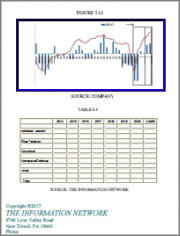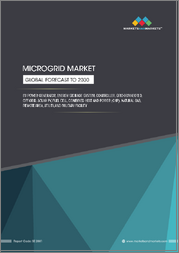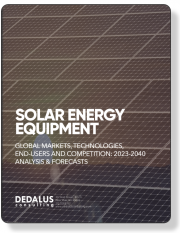
|
시장보고서
상품코드
1676061
세계의 상업 및 산업용 태양광 모듈 시장 조사 보고서 : 산업 분석, 규모, 점유율, 성장, 동향 및 예측(2025-2033년)Global Commercial and Industrial Solar PV Module Market Research Report- Industry Analysis, Size, Share, Growth, Trends and Forecast 2025 to 2033 |
||||||
상업용 및 산업용 태양광 모듈 세계 시장 규모는 2024년 420억 3,000만 달러에서 2033년 1,753억 4,000만 달러에 달하고, 2026-2033년의 예측 기간 동안 17.2%의 연평균 성장률(CAGR)을 나타낼 것으로 예상됩니다.
상업용 및 산업용 태양광 모듈 시장은 태양광 에너지의 경제적, 환경적 이점에 대한 기업들의 인식이 높아짐에 따라 크게 성장하고 있습니다. 전 세계적으로 재생 가능 에너지에 대한 관심이 높아지면서 태양광 발전(PV) 모듈은 상업용 및 산업용도에 선호되는 선택이 되고 있습니다. 태양광 기술의 비용 하락은 정부의 인센티브와 유리한 정책과 결합하여 보급을 촉진하고 있습니다. 기업들이 이산화탄소 배출량을 줄이고 에너지 자급자족을 달성하기 위해 고효율 태양광 모듈에 대한 수요가 급증하면서 시장 확대가 가속화될 것으로 예상됩니다.
기술의 발전 또한 상업용 및 산업용 태양광 모듈 시장의 미래를 형성하는 데 중요한 역할을 하고 있습니다. 양면 및 PERC(Passivated Emitter and Rear Cell) 설계와 같은 태양전지 기술 혁신은 태양전지 모듈의 효율과 성능을 향상시키고 있습니다. 이러한 발전은 사업자들이 에너지 출력과 투자 수익률을 극대화할 수 있도록 도와주며, 태양광 발전 설비를 더욱 매력적으로 만들고 있습니다. 또한, 에너지 관리 시스템 및 IoT 연결과 같은 스마트 기술의 통합은 태양에너지 활용을 더욱 최적화하여 첨단 태양광 발전 솔루션에 대한 수요를 촉진하고 있습니다.
또한, 지속가능성과 기업의 사회적 책임에 대한 관심이 높아지면서 상업용 및 산업용 태양광 모듈 시장에도 영향을 미치고 있습니다. 기업들은 브랜드 이미지를 높이고 이해관계자들의 기대에 부응하기 위해 재생 가능 에너지 솔루션의 채택을 늘리고 있습니다. 소비자와 투자자들이 지속가능성을 우선시하는 가운데, 태양에너지에 투자하는 기업은 경쟁 우위를 확보할 가능성이 높습니다. 장기적인 지속가능성 목표를 달성하고 신뢰할 수 있는 청정 에너지원을 찾는 기업이 늘어남에 따라 이러한 추세는 태양광 모듈 시장의 성장을 가속할 것으로 예상됩니다.
본 보고서는 고객에게 다양한 산업과 시장에 대한 종합적이고 실용적인 통찰력을 제공할 수 있도록 세심하게 작성되었습니다. 각 보고서는 시장 상황을 완전히 이해하기 위해 몇 가지 중요한 요소를 포함하고 있습니다.
시장 개요 : 시장 개요 : 정의, 분류, 산업 현황 등 시장에 대한 자세한 소개.
시장 성장 촉진요인: 시장 성장에 영향을 미치는 주요 촉진요인, 억제요인, 시장 성장 촉진요인 및 과제를 상세하게 분석합니다. 이 섹션에서는 기술 발전, 규제 변화, 새로운 트렌드 등의 요인을 검토합니다.
세분화 분석 : 제품 유형, 용도, 최종 사용자, 지역 등의 기준에 따라 시장을 명확한 부문으로 분류합니다. 이 분석을 통해 각 부문의 성과와 잠재력을 파악할 수 있습니다.
경쟁상황: 시장 점유율, 제품 포트폴리오, 전략적 이니셔티브, 재무실적 등 주요 시장 진입기업에 대한 종합적인 평가. 주요 기업들이 채택하고 있는 경쟁 역학 및 주요 전략에 대한 고찰이 포함되어 있습니다.
시장 예측 : 과거 데이터와 현재 시장 상황을 바탕으로 일정 기간 동안 시장 규모와 성장 추세를 예측합니다. 여기에는 정량적 분석과 미래 시장 궤적을 나타내는 그래프 표시가 포함됩니다.
지역 분석 : 지역별 시장 성과를 평가하고 주요 시장 및 지역 동향을 파악할 수 있습니다. 지역 시장 역학 및 비즈니스 기회를 이해하는 데 도움이 됩니다.
새로운 트렌드와 기회: 현재 시장 동향과 새로운 시장 동향, 기술 혁신, 잠재적 투자 대상 부문을 식별합니다. 미래 시장 개척 및 성장 전망에 대한 통찰력을 제공합니다.
목차
제1장 서문
제2장 주요 요약
- 시장 하이라이트
- 세계 시장 현황
제3장 상업 및 산업용 태양광 모듈 시장 분석
- 서론 : 시장 역학
- 시장 성장 촉진요인
- 시장 성장 억제요인
- 시장 기회
- 산업 동향
- Porter의 Five Forces 분석
- 시장의 매력 분석
제4장 밸류체인 분석
- 밸류체인 분석
- 원료 분석
- 원료 리스트
- 원료 제조업체 리스트
- 주요 원료 가격 동향
- 잠재적 바이어 리스트
- 마케팅 채널
- 직접 마케팅
- 간접 마케팅
- 마케팅 채널 발전 동향
제5장 세계의 상업 및 산업용 태양광 모듈 시장 분석 : 유형별
- 유형별 개요
- 유형별 과거 및 예측 데이터 분석
- 단결정
- 다결정
- 박막
제6장 세계의 상업 및 산업용 태양광 모듈 시장 분석 : 최종사용자별
- 최종사용자별 개요
- 최종사용자별 과거 및 예측 데이터 분석
- 유틸리티
- 상업 및 산업용
- 주택용
제7장 세계의 상업 및 산업용 태양광 모듈 시장 분석 : 용도별
- 용도별 개요
- 용도별 과거 및 예측 데이터 분석
- 옥상 설치형 시스템
- 지상 설치형 시스템
- 부유식 솔라 시스템
제8장 세계의 상업 및 산업용 태양광 모듈 시장 분석 : 셀 기술별
- 셀 기술별 개요
- 셀 기술별 과거 및 예측 데이터 분석
- PERC (Passivated Emitter and Rear Cell)
- PERT (Passivated Emitter and Rear Totally Diffused)
- HIT (Heterojunction with Intrinsic Thin Layer)
- IBC (Interdigitated Back Contact)
제9장 세계의 상업 및 산업용 태양광 모듈 시장 분석 : 지역별
- 지역별 전망
- 서론
- 북미의 판매 분석
- 개요, 분석과 예측
- 북미 : 부문별
- 북미 : 국가별
- 미국
- 캐나다
- 멕시코
- 유럽의 판매 분석
- 개요, 분석과 예측
- 유럽 : 부문별
- 유럽 : 국가별
- 영국
- 프랑스
- 독일
- 이탈리아
- 러시아
- 기타 유럽
- 아시아태평양의 판매 분석
- 개요, 분석과 예측
- 아시아태평양 : 부문별
- 아시아태평양 : 국가별
- 중국
- 인도
- 일본
- 한국
- 호주
- 동남아시아
- 기타 아시아태평양
- 라틴아메리카의 판매 분석
- 개요, 분석과 예측
- 라틴아메리카 : 부문별
- 라틴아메리카 : 국가별
- 브라질
- 아르헨티나
- 페루
- 칠레
- 기타 라틴아메리카
- 중동 및 아프리카의 판매 분석
- 개요, 분석과 예측
- 중동 및 아프리카 : 부문별
- 중동 및 아프리카 : 국가별 리스트
- 사우디아라비아
- 아랍에미리트(UAE)
- 이스라엘
- 남아프리카공화국
- 기타 중동 및 아프리카
제10장 상업 및 산업용 태양광 모듈 기업 경쟁 구도
- 상업 및 산업용 태양광 모듈 시장 경쟁
- 제휴, 협엄 및 계약
- 인수합병(M&A)
- 신제품 발표
- 기타 개발
제11장 기업 개요
- 주요 기업의 시장 점유율 분석
- 시장 집중도
- Canadian Solar
- Trina Solar
- First Solar
- Conergy AG
- Qcells
- JA Solar
- Hanwha Q CELLS
- Renesola Ltd.
- SunPower
- REC Group
- Risen Energy
- JinkoSolar
- Wacker Chemie AG
- LONGi Solar
- SolarEdge Technologies
Global Commercial and Industrial Solar PV Module Market size is anticipated to grow from USD 42.03 Billion in 2024 to USD 175.34 Billion by 2033, showcasing a robust Compound Annual Growth Rate (CAGR) of 17.2% during the forecast period of 2026 to 2033.
The Commercial and Industrial Solar PV Module Market is poised for significant growth as businesses increasingly recognize the economic and environmental benefits of solar energy. With the global push towards renewable energy sources, solar photovoltaic (PV) modules are becoming a preferred choice for commercial and industrial applications. The declining costs of solar technology, coupled with government incentives and favorable policies, are driving widespread adoption. As organizations seek to reduce their carbon footprint and achieve energy independence, the demand for high-efficiency solar PV modules is expected to surge, propelling market expansion.
Technological advancements are also playing a crucial role in shaping the future of the commercial and industrial solar PV module market. Innovations in solar cell technology, such as bifacial and PERC (Passivated Emitter and Rear Cell) designs, are enhancing the efficiency and performance of solar modules. These advancements enable businesses to maximize energy output and return on investment, making solar installations more attractive. Additionally, the integration of smart technologies, such as energy management systems and IoT connectivity, is further optimizing solar energy utilization, driving demand for advanced solar PV solutions.
Moreover, the increasing focus on sustainability and corporate social responsibility is influencing the commercial and industrial solar PV module market. Companies are increasingly adopting renewable energy solutions to enhance their brand image and meet stakeholder expectations. As consumers and investors prioritize sustainability, businesses that invest in solar energy are likely to gain a competitive edge. This trend is expected to fuel the growth of the solar PV module market, as more organizations commit to long-term sustainability goals and seek reliable, clean energy sources.
Our reports are meticulously crafted to provide clients with comprehensive and actionable insights into various industries and markets. Each report encompasses several critical components to ensure a thorough understanding of the market landscape:
Market Overview: A detailed introduction to the market, including definitions, classifications, and an overview of the industry's current state.
Market Dynamics: In-depth analysis of key drivers, restraints, opportunities, and challenges influencing market growth. This section examines factors such as technological advancements, regulatory changes, and emerging trends.
Segmentation Analysis: Breakdown of the market into distinct segments based on criteria like product type, application, end-user, and geography. This analysis highlights the performance and potential of each segment.
Competitive Landscape: Comprehensive assessment of major market players, including their market share, product portfolio, strategic initiatives, and financial performance. This section provides insights into the competitive dynamics and key strategies adopted by leading companies.
Market Forecast: Projections of market size and growth trends over a specified period, based on historical data and current market conditions. This includes quantitative analyses and graphical representations to illustrate future market trajectories.
Regional Analysis: Evaluation of market performance across different geographical regions, identifying key markets and regional trends. This helps in understanding regional market dynamics and opportunities.
Emerging Trends and Opportunities: Identification of current and emerging market trends, technological innovations, and potential areas for investment. This section offers insights into future market developments and growth prospects.
SEGMENTATION COVERED IN THE REPORT
By Type
- Monocrystalline
- Polycrystalline
- Thin-film
By End User
- Utilities
- Commercial and Industrial
- Residential
By Application
- Rooftop Systems
- Ground-Mounted Systems
- Floating Solar Systems
By Cell Technology
- PERC (Passivated Emitter and Rear Cell)
- PERT (Passivated Emitter and Rear Totally Diffused)
- HIT (Heterojunction with Intrinsic Thin Layer)
- IBC (Interdigitated Back Contact)
- COMPANIES PROFILED
- Canadian Solar
- Trina Solar
- First Solar
- Conergy AG
- Qcells
- JA Solar
- Hanwha Q CELLS
- Renesola Ltd.
- SunPower
- REC Group
- Risen Energy
- JinkoSolar
- Wacker Chemie AG
- LONGi Solar
- SolarEdge Technologies
- The above list can be customized.
TABLE OF CONTENTS
1. PREFACE
- 1.1. Report Description
- 1.1.1 Objective
- 1.1.2 Target Audience
- 1.1.3 Unique Selling Proposition (USP) & offerings
- 1.2. Research Scope
- 1.3. Research Methodology
- 1.3.1 Market Research Process
- 1.3.2 Market Research Methodology
2. EXECUTIVE SUMMARY
- 2.1. Highlights of Market
- 2.2. Global Market Snapshot
3. COMMERCIAL AND INDUSTRIAL SOLAR PV MODULE a€" INDUSTRY ANALYSIS
- 3.1. Introduction - Market Dynamics
- 3.2. Market Drivers
- 3.3. Market Restraints
- 3.4. Opportunities
- 3.5. Industry Trends
- 3.6. Porters Five Force Analysis
- 3.7. Market Attractiveness Analysis
- 3.7.1 Market Attractiveness Analysis By Type
- 3.7.2 Market Attractiveness Analysis By End User
- 3.7.3 Market Attractiveness Analysis By Application
- 3.7.4 Market Attractiveness Analysis By Cell Technology
- 3.7.5 Market Attractiveness Analysis By Region
4. VALUE CHAIN ANALYSIS
- 4.1. Value Chain Analysis
- 4.2. Raw Material Analysis
- 4.2.1 List of Raw Materials
- 4.2.2 Raw Material Manufactures List
- 4.2.3 Price Trend of Key Raw Materials
- 4.3. List of Potential Buyers
- 4.4. Marketing Channel
- 4.4.1 Direct Marketing
- 4.4.2 Indirect Marketing
- 4.4.3 Marketing Channel Development Trend
5. GLOBAL COMMERCIAL AND INDUSTRIAL SOLAR PV MODULE MARKET ANALYSIS BY TYPE
- 5.1. Overview By Type
- 5.2. Historical and Forecast Data Analysis By Type
- 5.3. Monocrystalline Historic and Forecast Sales By Regions
- 5.4. Polycrystalline Historic and Forecast Sales By Regions
- 5.5. Thin-film Historic and Forecast Sales By Regions
6. GLOBAL COMMERCIAL AND INDUSTRIAL SOLAR PV MODULE MARKET ANALYSIS BY END USER
- 6.1. Overview By End User
- 6.2. Historical and Forecast Data Analysis By End User
- 6.3. Utilities Historic and Forecast Sales By Regions
- 6.4. Commercial and Industrial Historic and Forecast Sales By Regions
- 6.5. Residential Historic and Forecast Sales By Regions
7. GLOBAL COMMERCIAL AND INDUSTRIAL SOLAR PV MODULE MARKET ANALYSIS BY APPLICATION
- 7.1. Overview By Application
- 7.2. Historical and Forecast Data Analysis By Application
- 7.3. Rooftop Systems Historic and Forecast Sales By Regions
- 7.4. Ground-Mounted Systems Historic and Forecast Sales By Regions
- 7.5. Floating Solar Systems Historic and Forecast Sales By Regions
8. GLOBAL COMMERCIAL AND INDUSTRIAL SOLAR PV MODULE MARKET ANALYSIS BY CELL TECHNOLOGY
- 8.1. Overview By Cell Technology
- 8.2. Historical and Forecast Data Analysis By Cell Technology
- 8.3. PERC (Passivated Emitter and Rear Cell) Historic and Forecast Sales By Regions
- 8.4. PERT (Passivated Emitter and Rear Totally Diffused) Historic and Forecast Sales By Regions
- 8.5. HIT (Heterojunction with Intrinsic Thin Layer) Historic and Forecast Sales By Regions
- 8.6. IBC (Interdigitated Back Contact) Historic and Forecast Sales By Regions
9. GLOBAL COMMERCIAL AND INDUSTRIAL SOLAR PV MODULE MARKET ANALYSIS BY GEOGRAPHY
- 9.1. Regional Outlook
- 9.2. Introduction
- 9.3. North America Sales Analysis
- 9.3.1 Overview, Historic and Forecast Data Sales Analysis
- 9.3.2 North America By Segment Sales Analysis
- 9.3.3 North America By Country Sales Analysis
- 9.3.4 United States Sales Analysis
- 9.3.5 Canada Sales Analysis
- 9.3.6 Mexico Sales Analysis
- 9.4. Europe Sales Analysis
- 9.4.1 Overview, Historic and Forecast Data Sales Analysis
- 9.4.2 Europe By Segment Sales Analysis
- 9.4.3 Europe By Country Sales Analysis
- 9.4.4 United Kingdom Sales Analysis
- 9.4.5 France Sales Analysis
- 9.4.6 Germany Sales Analysis
- 9.4.7 Italy Sales Analysis
- 9.4.8 Russia Sales Analysis
- 9.4.9 Rest Of Europe Sales Analysis
- 9.5. Asia Pacific Sales Analysis
- 9.5.1 Overview, Historic and Forecast Data Sales Analysis
- 9.5.2 Asia Pacific By Segment Sales Analysis
- 9.5.3 Asia Pacific By Country Sales Analysis
- 9.5.4 China Sales Analysis
- 9.5.5 India Sales Analysis
- 9.5.6 Japan Sales Analysis
- 9.5.7 South Korea Sales Analysis
- 9.5.8 Australia Sales Analysis
- 9.5.9 South East Asia Sales Analysis
- 9.5.10 Rest Of Asia Pacific Sales Analysis
- 9.6. Latin America Sales Analysis
- 9.6.1 Overview, Historic and Forecast Data Sales Analysis
- 9.6.2 Latin America By Segment Sales Analysis
- 9.6.3 Latin America By Country Sales Analysis
- 9.6.4 Brazil Sales Analysis
- 9.6.5 Argentina Sales Analysis
- 9.6.6 Peru Sales Analysis
- 9.6.7 Chile Sales Analysis
- 9.6.8 Rest of Latin America Sales Analysis
- 9.7. Middle East & Africa Sales Analysis
- 9.7.1 Overview, Historic and Forecast Data Sales Analysis
- 9.7.2 Middle East & Africa By Segment Sales Analysis
- 9.7.3 Middle East & Africa By Country Sales Analysis
- 9.7.4 Saudi Arabia Sales Analysis
- 9.7.5 UAE Sales Analysis
- 9.7.6 Israel Sales Analysis
- 9.7.7 South Africa Sales Analysis
- 9.7.8 Rest Of Middle East And Africa Sales Analysis
10. COMPETITIVE LANDSCAPE OF THE COMMERCIAL AND INDUSTRIAL SOLAR PV MODULE COMPANIES
- 10.1. Commercial and Industrial Solar PV Module Market Competition
- 10.2. Partnership/Collaboration/Agreement
- 10.3. Merger And Acquisitions
- 10.4. New Product Launch
- 10.5. Other Developments
11. COMPANY PROFILES OF COMMERCIAL AND INDUSTRIAL SOLAR PV MODULE INDUSTRY
- 11.1. Top Companies Market Share Analysis
- 11.2. Market Concentration Rate
- 11.3. Canadian Solar
- 11.3.1 Company Overview
- 11.3.2 Company Revenue
- 11.3.3 Products
- 11.3.4 Recent Developments
- 11.4. Trina Solar
- 11.4.1 Company Overview
- 11.4.2 Company Revenue
- 11.4.3 Products
- 11.4.4 Recent Developments
- 11.5. First Solar
- 11.5.1 Company Overview
- 11.5.2 Company Revenue
- 11.5.3 Products
- 11.5.4 Recent Developments
- 11.6. Conergy AG
- 11.6.1 Company Overview
- 11.6.2 Company Revenue
- 11.6.3 Products
- 11.6.4 Recent Developments
- 11.7. Qcells
- 11.7.1 Company Overview
- 11.7.2 Company Revenue
- 11.7.3 Products
- 11.7.4 Recent Developments
- 11.8. JA Solar
- 11.8.1 Company Overview
- 11.8.2 Company Revenue
- 11.8.3 Products
- 11.8.4 Recent Developments
- 11.9. Hanwha Q CELLS
- 11.9.1 Company Overview
- 11.9.2 Company Revenue
- 11.9.3 Products
- 11.9.4 Recent Developments
- 11.10. Renesola Ltd.
- 11.10.1 Company Overview
- 11.10.2 Company Revenue
- 11.10.3 Products
- 11.10.4 Recent Developments
- 11.11. SunPower
- 11.11.1 Company Overview
- 11.11.2 Company Revenue
- 11.11.3 Products
- 11.11.4 Recent Developments
- 11.12. REC Group
- 11.12.1 Company Overview
- 11.12.2 Company Revenue
- 11.12.3 Products
- 11.12.4 Recent Developments
- 11.13. Risen Energy
- 11.13.1 Company Overview
- 11.13.2 Company Revenue
- 11.13.3 Products
- 11.13.4 Recent Developments
- 11.14. JinkoSolar
- 11.14.1 Company Overview
- 11.14.2 Company Revenue
- 11.14.3 Products
- 11.14.4 Recent Developments
- 11.15. Wacker Chemie AG
- 11.15.1 Company Overview
- 11.15.2 Company Revenue
- 11.15.3 Products
- 11.15.4 Recent Developments
- 11.16. LONGi Solar
- 11.16.1 Company Overview
- 11.16.2 Company Revenue
- 11.16.3 Products
- 11.16.4 Recent Developments
- 11.17. SolarEdge Technologies
- 11.17.1 Company Overview
- 11.17.2 Company Revenue
- 11.17.3 Products
- 11.17.4 Recent Developments



















